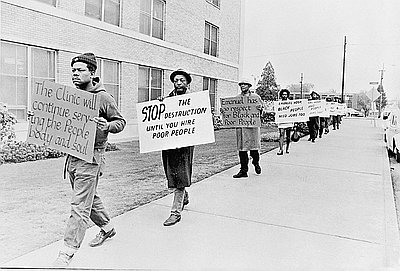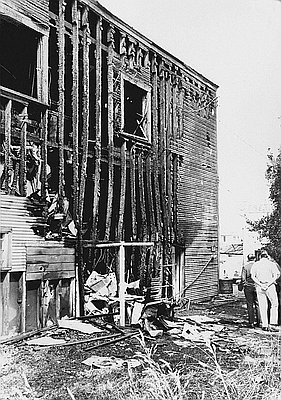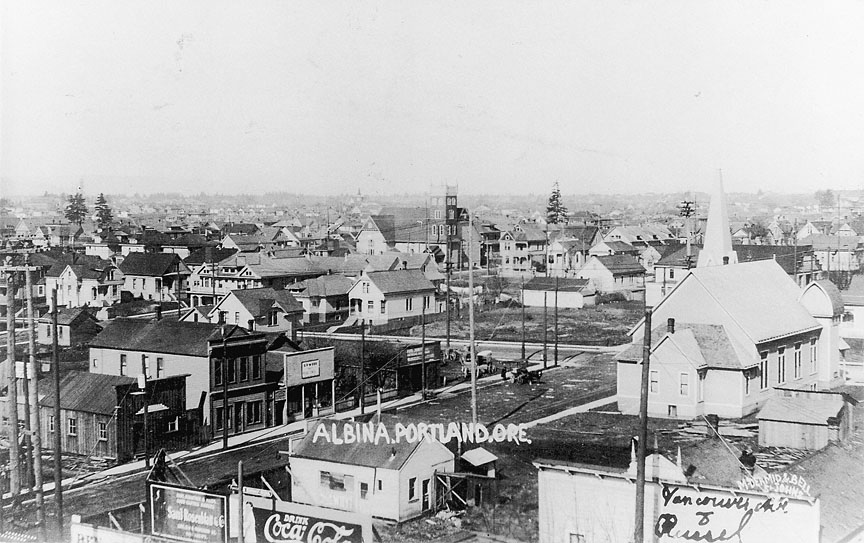- Catalog No. —
- OrHi 45268
- Date —
- 1909
- Era —
- 1881-1920 (Industrialization and Progressive Reform)
- Themes —
- Geography and Places, Race, Ethnicity, and Nationality
- Credits —
- Oregon Historical Society
- Regions —
- Portland Metropolitan
- Author —
- McDermid & Bell
Albina, Portland, 1909
This photograph shows the intersection of Vancouver and Russell in 1909, when Albina had been a part of Portland for eighteen years. From its incorporation in 1887 until 1891, Albina was a city in its own right. In 1891, both East Portland and Albina became a part of Portland.
In 1883, the construction of the Union Pacific Railway and the terminal yards caused both the population and the property values in Albina to soar. From 1887 until 1891, Albina city ordinances primarily addressed the economic interests of the railroad and other large investors, making it essentially a company town. Just days before Albina’s planned incorporation into the city of Portland was finalized, Albina’s city council hurriedly passed ordinances and signed contracts for such expenditures as paved roads, city parks and lighting, which benefited property owners but created a financial burden for the taxpayers of the newly combined city.
Prior to the opening of the Morrison Bridge in 1887, parts of Albina were uninhabited wetland. However, as transportation from the central district became easier, population in Albina continued to rise, as did land prices, quadrupling in the first decade of the 20th century. By 1910, a year after this picture was taken, the population on the eastside reached 120,000.
When it joined with Portland in 1891, Albina’s land area covered thirteen and a half square miles including St. Johns, more than Portland and East Portland combined.
Further Reading:
MacColl, E. Kimbark. Merchants, Money and Power: The Portland Establishment 1843-1913. Portland, Oreg., 1988.
Written by Trudy Flores, Sarah Griffith, © Oregon Historical Society, 2002.
Related Historical Records
-
Albina Residents Picket the Portland Development Commission, 1973
Beginning in the 1960s, the City of Portland, with the cooperation of the Portland Development Commission (PDC) and Emanuel Hospital, began to lay the groundwork for redeveloping the …

-
Albina Riot, 1967
What began as a political rally to stir the African American community to “revolution” in Irving Park on Sunday, July 30, 1967, turned into two-nights of disturbances. Two to …

